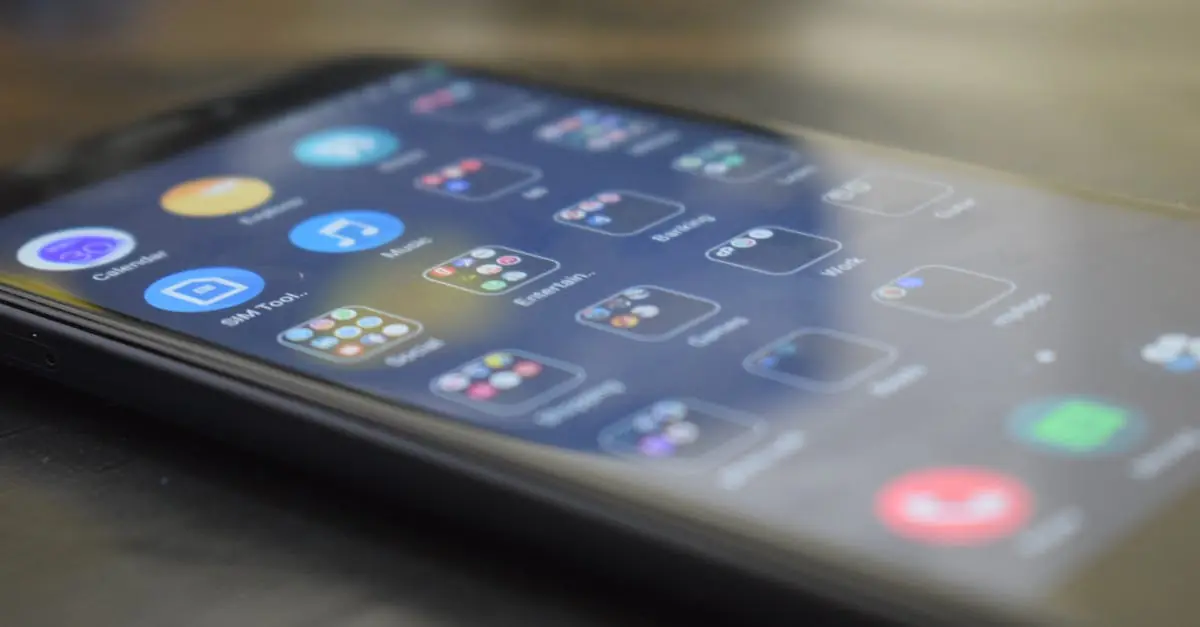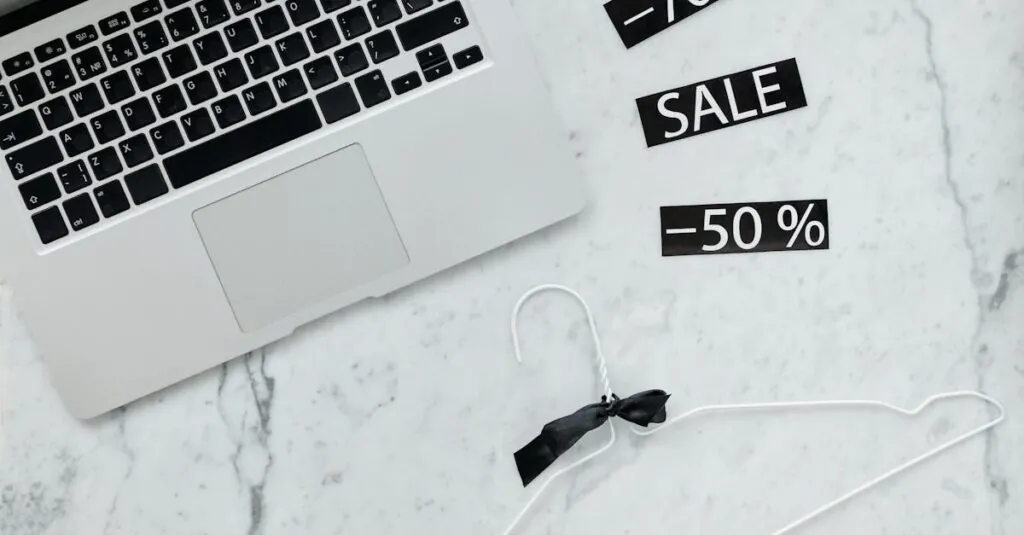Table of Contents
ToggleIn a world where one-size-fits-all just doesn’t cut it, device customization has become the holy grail for tech enthusiasts. Imagine transforming your bland gadget into a personalized masterpiece that screams “you.” Whether it’s a phone that matches your wildest color dreams or a laptop that reflects your quirky personality, the possibilities are endless.
Overview of Device Customization
Device customization enables users to tailor their gadgets to reflect personal tastes and preferences. Individuals often opt for unique colors, materials, or designs that stand out from standard options. Each customization option serves as a canvas for creativity, transforming an ordinary device into a personalized statement.
Customization varies by device type. Smartphones, tablets, and laptops offer different features like skins, cases, and wraps. Users frequently choose vibrant colors for their smartphones, while others select elegant cases for laptops to enhance professional appearances. The trend also extends to gaming consoles and accessories, allowing avid gamers to showcase their personality through vibrant designs and modifications.
The benefits of customization extend beyond aesthetics. Enhanced functionality can result from adding features like enhanced grip or better protection against drops. Some customization options improve user experience by integrating unique ergonomic designs. Community feedback often highlights specific features, prompting manufacturers to expand their customization offerings to meet consumer demand.
Enhancing brand loyalty ties directly to device customization. Companies like Apple and Samsung encourage personalization by allowing users to select colors and finishes for their devices. Collaborative designs with artists also boost engagement while attracting niche markets.
Device customization expresses individuality and fosters a sense of ownership over tech products. By actively participating in the customization process, users develop a more profound connection with their devices. This trend shows no signs of slowing, as tech enthusiasts continue seeking new ways to personalize their experiences.
Types of Device Customization
Device customization encompasses various aspects, allowing users to enhance both the appearance and functionality of their gadgets. Two primary categories spearhead this trend: hardware customization and software customization.
Hardware Customization
Hardware customization offers users a tangible way to personalize devices. Options include replacing stock components like keyboards or hard drives with unique alternatives, enhancing both aesthetics and performance. Skins and cases remain popular choices, adding vibrant colors and protective features to smartphones, tablets, and laptops. Unique designs can reflect personal style or even brand loyalty. Companies such as Razer and ASUS provide customizable gaming laptops that allow gamers to select components tailored to their preferences. Personalized accessories, including customized controller designs and personalized headphones, make gaming experiences even more enjoyable for enthusiasts.
Software Customization
Software customization allows users to modify settings, applications, and interfaces to suit individual tastes. Changing wallpapers, themes, and icons can breathe new life into devices, transforming their look and feel. Many operating systems, like Android, provide extensive customization options, allowing users to rearrange app layouts and tweak settings to enhance user experience. Widgets can also deliver personalized information at a glance, further improving usability. Gaming consoles offer unique themes and user interfaces, creating tailored experiences for players. Developers increasingly create apps that facilitate deeper customization, which strengthens user engagement with devices.
Benefits of Device Customization
Device customization offers various advantages that enhance user satisfaction and engagement. Users appreciate the flexibility to tailor devices to their preferences, leading to a more enjoyable experience.
Enhanced User Experience
Customization significantly improves user experience. Individuals can modify interfaces and settings, creating a personal touch that enhances usability. A tailored layout can increase efficiency, as people organize their apps according to their habits. Custom themes add visual appeal, making interactions more enjoyable and motivating. Gamers often benefit from personalized settings, as unique controls and themes offer a competitive edge. Users frequently find that customized devices reduce frustration and streamline daily tasks, resulting in a sense of ownership that fosters loyalty to brands.
Improved Functionality
Functionality benefits greatly from customization. Users can upgrade hardware components, such as storage drives and graphics cards, resulting in enhanced performance tailored to individual needs. Personalized accessories, like gaming mice or keyboards, improve gaming experiences by providing specific features demanded by users. Software customization also plays a vital role, as individuals can choose apps that suit their workflows. Enhanced compatibility with personalized settings ensures better integration and efficiency, facilitating a more seamless operation. This functionality leads to a more satisfying relationship between users and their devices, encouraging them to explore even further customization options.
Popular Devices for Customization
Customization remains popular among various devices, particularly smartphones and laptops. These gadgets often reflect personal style and functionality.
Smartphones
Smartphones offer extensive customization options. Users can select vibrant skins and stylish cases, allowing them to express individuality. Brands like Apple and Samsung provide varied finishes and colors, enabling personalized aesthetics. Notably, Android operating systems allow for extensive software tweaks, including themes and layouts. Users can even modify icons and widgets, enhancing their experience. Some enthusiasts enjoy creating unique wallpapers or applying advanced launchers for a complete overhaul. Overall, the combination of hardware and software customization leads to a device that truly mirrors personal preferences.
Laptops
Laptops also present numerous customization opportunities. Many manufacturers, such as Razer and ASUS, allow users to upgrade components like memory and storage. This hardware flexibility enhances performance based on individual needs. Moreover, aesthetics aren’t overlooked; users can opt for custom skins and cases, adding a personal touch. Software customization in laptops enables individuals to personalize user interfaces, from themes to app placements. Various utilities exist to help customize functionality further, catering to specific workflows. Such adaptability enhances the overall user experience, making laptops versatile tools for personal or professional use.
Challenges in Device Customization
Customization offers exciting possibilities, yet it presents several challenges users encounter. Understanding these obstacles is essential for a smoother personalization experience.
Compatibility Issues
Compatibility issues frequently arise with device customization. Users may find that certain skins or cases do not fit various smartphone models, limiting personalization options. Specific components, such as RAM or graphics cards, can also restrict hardware upgrades on laptops, as manufacturers often design devices with proprietary parts. Compatibility varies across brands, making research a key step before purchasing. Ensuring components match specifications saves users from frustration and wasted resources.
Security Concerns
Security concerns are critical in the realm of device customization. Custom software, particularly from unofficial sources, can introduce vulnerabilities, putting user data at risk. Certain modifications may disable built-in security features, leaving devices exposed to malware and cyber threats. Concerns about data privacy become more pronounced with third-party applications that collect information. Staying informed about potential risks and taking precautions is vital for maintaining device integrity. Awareness empowers users to enjoy customization while safeguarding their personal information.
Conclusion
Device customization is more than a trend; it’s a movement that empowers users to transform their gadgets into personal statements. As tech enthusiasts continue to explore innovative ways to personalize their devices, the demand for both aesthetic and functional enhancements will only grow.
Navigating the challenges of compatibility and security is essential for a fulfilling customization experience. By being informed and cautious, users can enjoy the benefits of personalization while safeguarding their devices.
As the landscape of technology evolves, the possibilities for customization will expand, offering even more avenues for self-expression and enhanced functionality. The future of device customization looks bright, inviting users to embrace their individuality in the digital realm.




